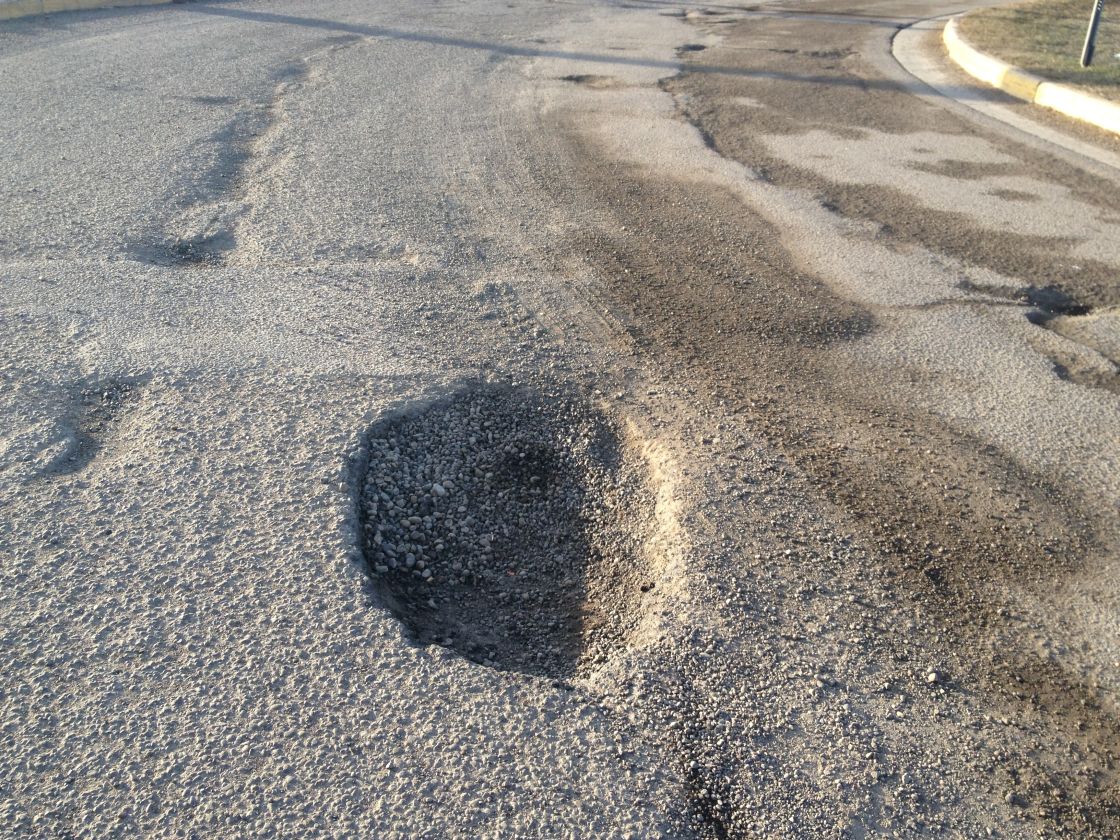EDMONTON – The City is hoping to ease pothole problems on Edmonton’s arterial roads with a long-term plan that will be presented to Edmonton’s Transportation Committee next week.

The transportation department estimates 18 per cent of Edmonton’s arterial roads are in need of repairs. It would like to see that number dropped to ten per cent within five years.
To accomplish that, the department would like to see $65 million in funding annually, starting with the 2015-2018 capital budget cycle.
For 2013, the City of Edmonton has committed $21 million to filling potholes and repairing damaged roads – a $12 million increase from the $9 million that was initially budgeted. The news comes as part of a larger announcement regarding a new long-term strategy to fix many of Edmonton’s damaged roadways.
Edmonton’s Transportation General Manager, Bob Boutilier, says it’s important for the city to dole out the extra money in order to keep pace with repair plans.
“We got the paving index, which is basically the condition of the roadways, up to an acceptable level,” he said. “But if we don’t continue to make the investment, we will fall behind.”

Get daily National news
The City has already filled 320,000 potholes this year, and is on track to shatter their yearly average of 450,000. They have reported fewer complaints from citizens as well, says Boutilier, despite losing almost a month of work to snowy weather in April.
According to the city, there should be at least 20 repair crews working on Edmonton roads at any given time.
Boutilier stressed the importance of setting priorities when choosing what work needs to be done since some roads only need minor potholes filled, while other roads need a complete reconstruction or they will fail altogether.
Boutilier said he was confident that people will notice the difference in road quality once the new repair strategy is underway. He also confirmed that without it, 50 per cent of Edmonton’s roadways would be in desperate need of rehabilitation by 2017.
“If you recall five or six years ago, we made the exact same comment about the neighbourhoods,” he said. “We had about 30 or 40 neighbourhoods that, when you would drive down them, were horrible. But we let the system go on for so long that we had to start rehabilitating entire neighbourhoods, and that is where council jumped in and said ‘we get it.’”
Boutilier hopes this new long-term strategy, which the Transportation Committee discuss next Wednesday, will prevent that from happening again.
“Lessons learned from the neighbourhood renewal were: don’t wait, put your plan together so you can fix it before it actually crumbles.”







Comments